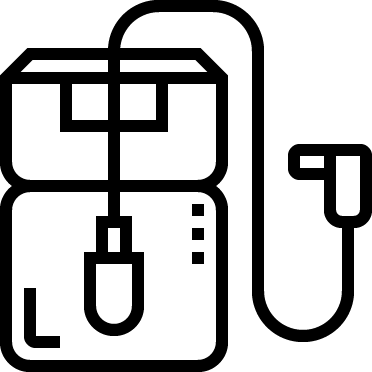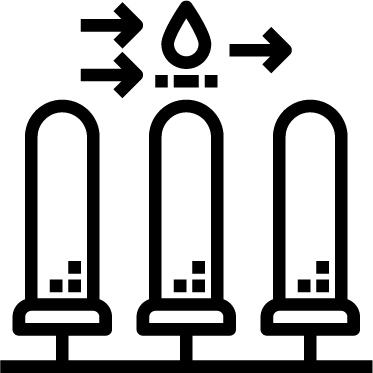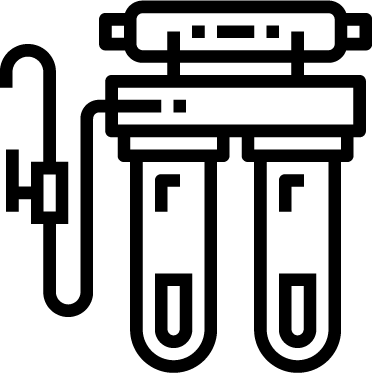The Best Ways To Utilize Your RO Water System – CleanTech Bangladesh
Used in almost every chemical filtration process, reverse osmosis is one of the most effective methods of water filtration yet. Usually, the word RO System is associated with water filtration but many industries and factories are known to use this in order to obtain a particular water profile of their solvent which helps in developing the chemical further. But sticking to the water filtration process, RO is still considered to be somewhat of a wasteful method to filter out water. A few drawbacks faced are more amount of rejected water then filtered out, fouling of membranes etc. However, such drawbacks are just obstacles and can be taken off very easily.
RO for your home
Household RO systems are some of the largest selling in the world. People have also moved on to filters equipped with active carbon and UV filters but every filter has to have a reverse osmosis chamber because of its advantages. To start with RO eliminates TDS, sediments, microorganisms, salts, and chemicals giving pure water. It does require energy to do that but in the end, the output received is of the purest form. This is why almost every company has moved to reverse osmosis as a core process infiltration. It is, however, true that it does come with a few disadvantages and there are ways to use RO in the best way possible.
Tackling the problem is the solution
An average filter requires around 30-50 W power based on the filter’s make. Companies have their own specifications and hence the consumption specifications differ. For cases where filters seem to pose a problem with the amount of energy consumed, a few steps can help mitigate the problem. For the optimal use of an RO, it is advised to filter water and store it in bottles and it requires more energy to start the system than just keep it running. However, if your system more energy than that, it would be best to consult an expert who could tell if the filter is facing any issues. More energy consumption and less water output can mean the membrane or the pipes and pathways in the system are clogged and making the system work more.
Membrane fouling is known to happen and cannot be avoided completely. One can try to ensure that it doesn’t happen often and it doesn’t affect the productivity of the system. Membrane fouling is a result of the formation of a layer of microorganisms, chemicals, and substances that degrade the material of the membrane. If not cleaned in time, the membrane can either collapse or not work efficiently putting the lives of the family or their pockets at risk. Here are two ways to ensure this doesn’t happen.
- Get an expert to profile the water supply. In case it contains chemicals that degrade membrane material you will have to install a pre-filter system that eliminates those substances in the first place. It is a little money at the start but is way cheaper than paying for a new membrane every time.
- For membrane fouling, the one very simple option is to clean the membrane regularly. Companies always have certain days assigned to an RO system after it is purchased when having is serviced is advised. Get in touch with a local plumber or the company expert to get the work done. You can also learn from them how to do it and do it later yourself. Whatever the case, ensure proper periodic cleaning happens, or else the membrane will start ripping you off of your money.
Make better use of the rejected water
The amount of water rejected by an RO system is way more than it provides after purification. While this statement is somewhat true, it is at times over-exaggerated. The truth is, the more amount of water rejected indicates more amounts of impurities per unit area. This is the reason why the purifier rejects more water than its filters. The first step therefore before buying any filter is to profile your supply. Based on the results, companies can suggest you the best equipment that works without wastage of water and energy. In case you live near a brackish source or the sea, it is preferable to get a 4 or 5 stage reverse osmosis water filter.
But even then, the filter is bound to reject water in any amount. Here is how one can make efficient use of the rejected water.
- Based on the constituents of the rejected water, it can be used in your garden for watering plants. Attaching the rejected water pipe to a tank for storing it is preferable. Later while you are at work in your backyard, you can get it running from the tank and into your garden.
- It can also be used for cleaning your car. If the rejection does not have any hard chemicals, it would work just fine for the cleaning of cars. However, the supply can be taken from the storage tank.
- We always require water to clean our houses, the rejected water can be very useful for mopping and sweeping the house.
Reverse Osmosis is one of the best methods of filtration yet which is why it is used prominently in almost every seawater purification plant in the world. Based on the drawbacks mentioned above, imagine the amount of energy consumption, water rejection, and membrane fouling for a plant that gives out millions of gallons of drinking water each day. Researchers are still working on getting the nitty-gritty of reverse osmosis just right so that it is a more sustainable option for not just large-scale industrial systems but also for residential RO.


 Industrial Water Plant
Industrial Water Plant










